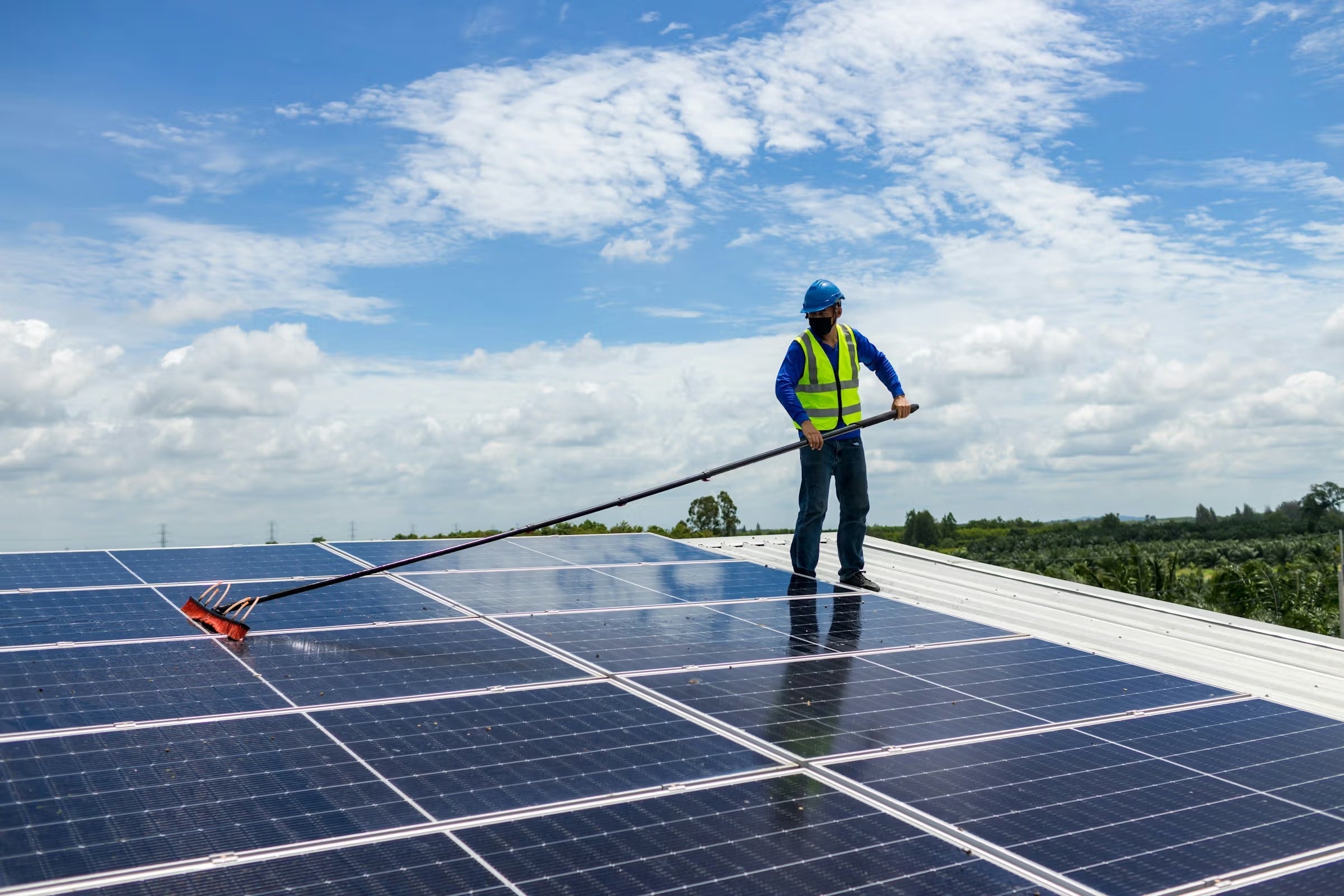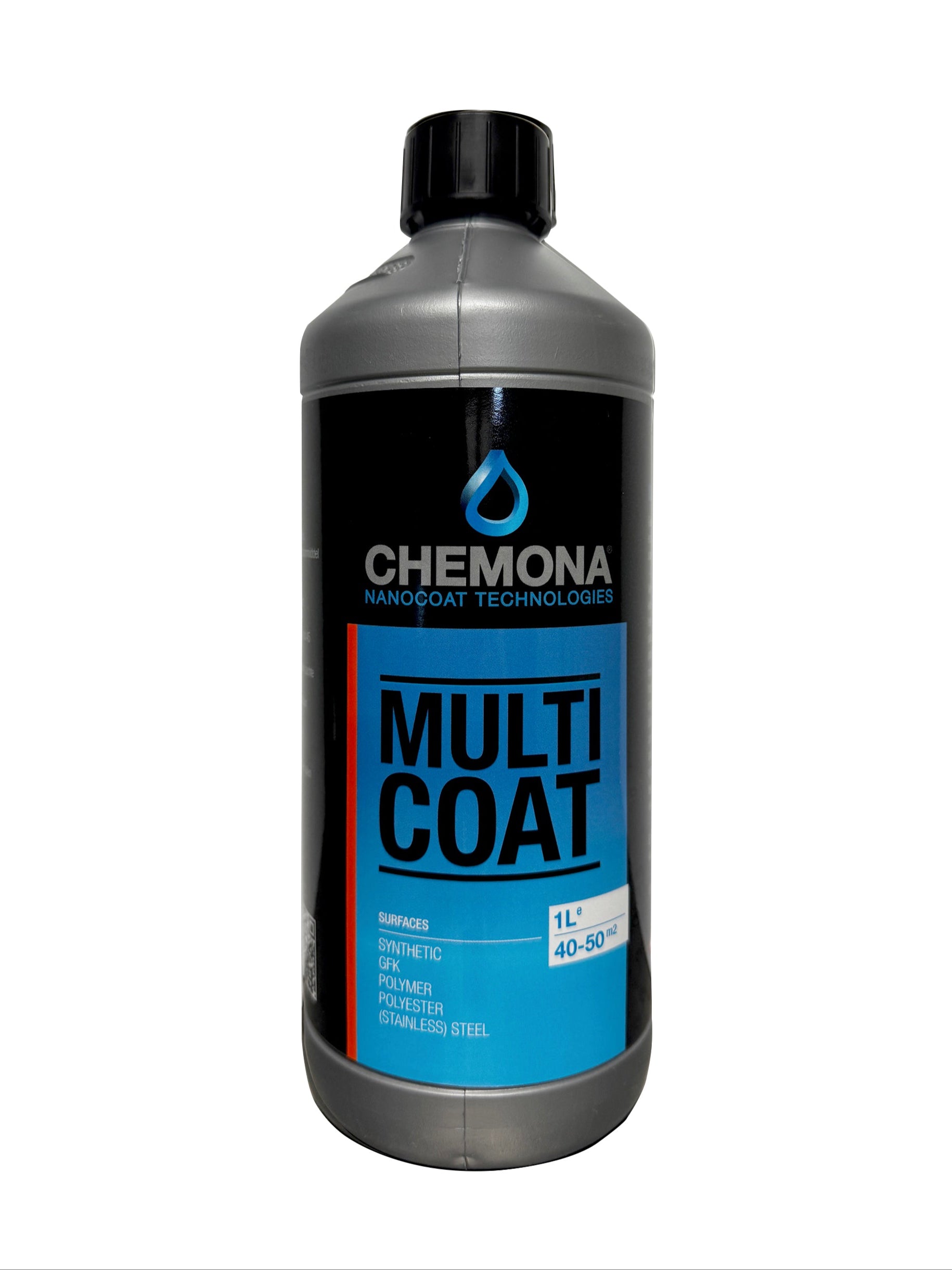Solar panels are a smart investment in sustainable energy, but dirt, dust, and weather can reduce their efficiency over time. Fortunately, nano-coating offers an innovative solution to keep solar panels clean and efficient for longer. But how exactly does nano-coating work? What effect does it have on energy yield? And is the investment worth it? In this blog post, you'll discover everything about protecting your solar panels with nano-coating.

What is nano coating?
Nano Coating is an ultra-thin, transparent layer of nanoparticles applied to the glass of solar panels. This coating reduces the adhesion of dirt, dust, and water to the surface, keeping solar panels cleaner for longer. The technology behind nano coating originates from nanotechnology, a field of science that focuses on materials and structures at the nanometer scale (one billionth of a meter). This means the coating works at the molecular level to create a smooth and repellent surface.
The main advantages of nano coating are:
-
Water and dirt repellent
The coating has a self-cleaning effect, allowing rainwater to carry away dirt and rinse it away. This is especially useful in urban areas or for installations near highways, industrial areas, and agricultural lands where particulate matter and pollution are prevalent.
-
Protection against weather influences:
The coating provides extra protection against UV radiation, acid rain, and temperature fluctuations. This can extend the lifespan of solar panels.
-
Anti-reflective effect:
Some nano coatings reduce light reflection, allowing more sunlight to penetrate the glass and increasing the panels' efficiency. This effect is particularly beneficial in areas with low solar radiation, such as the Netherlands during the winter months.
-
Less maintenance:
Because dirt and dust adhere less to the panels, cleaning is required less frequently. This saves time and money, especially with larger installations or hard-to-reach panels.
How does nano coating on solar panels work?
Nanocoating uses advanced chemical processes to form a protective layer on the surface of solar panels. Depending on the composition of the coating, it can be hydrophobic (water-repellent) or hydrophilic (water-attracting). In either case, the coating ensures that water doesn't remain as droplets, but spreads or drains away immediately, taking dirt with it.
Most nano coatings contain silica materials, titanium dioxide, or other active ingredients that offer a self-cleaning effect. Titanium dioxide, for example, has photocatalytic properties, meaning it breaks down dirt under the influence of sunlight. This contributes to a longer lifespan of the panels and helps prevent the buildup of organic matter such as algae and moss.
The effect of nano coating on the efficiency of solar panels
A frequently asked question is whether nano-coating actually has a measurable effect on the energy yield of solar panels. Various studies show that contamination can cause a yield loss of 4% to 8% per year. In dry or dusty areas, this can even be as high as 20%.
Nanocoating helps limit this loss by reducing dirt adhesion and improving the self-cleaning properties of solar panels. In the Netherlands, where regular rainfall provides natural cleaning, efficiency improvements from nanocoating are generally more modest. Practical tests show that efficiency remains 1% to 3% higher on average compared to uncoated panels. In very polluted environments, this difference can be significant.
In addition, a nano coating can contribute to a more stable energy yield throughout the year. Normally, solar panels can experience a decrease in efficiency during the winter months due to the accumulation of dust, bird droppings, and other contaminants. With a nano coating, the panel surface stays cleaner for longer, resulting in a more consistent efficiency and fewer fluctuations in energy production.
Costs versus benefits of nano coating
When considering nano coatings, cost plays a significant role. The price of nano coatings varies depending on the type of coating and the installation method:
Treating materials with nano coating
A high-quality nano coating costs an average of €200 per liter and is sufficient for 100-200 m² of panel surface. This means the cost per solar panel can be relatively low, especially for larger installations where the coating can be spread across multiple panels.
Application of nano coating
A professional coating treatment can cost anywhere from €50 to €200 per panel. The exact price depends on factors such as the scale of the installation, the difficulty of the application, and the accessibility of the panels. Larger solar farms or industrial facilities can benefit from economies of scale, resulting in lower costs per panel.

Solar panel maintenance
Nano coatings have a lifespan of 3 to 10 years, depending on exposure to weather conditions and the quality of the nano coating used. Some high-quality coatings promise longer protection and less frequent maintenance, while less expensive versions may require more frequent reapplication.
For residential solar panel owners, the costs often outweigh the modest gains in efficiency. However, for commercial installations or solar panels on difficult-to-reach roofs, nano-coating can be attractive due to lower maintenance costs and a more stable energy yield.
Another factor in the cost-benefit analysis is the savings on cleaning costs. Cleaning solar panels can cost just a few tens of euros per year for a household, but for large solar farms and industrial installations, this can amount to thousands of euros per year. Due to the reduced maintenance requirements, nano-coating can be financially advantageous in the long run.
Nanocoating in the Netherlands: practical examples
In the Netherlands, nano coating is already being used by various companies and installers, particularly for commercial solar parks and industrial roofs. Research has shown that the yield gain in the Netherlands is limited, but that the coating mainly offers advantages in terms of reduced maintenance and protection against contamination.
Several companies, such as Cleaning & Coating Nederland and NanoEnzo, offer specialized nano-coating solutions for solar panels. In addition, research institutions like TNO participate in international projects to evaluate the long-term benefits of nano-coating.
A practical example is a solar farm in Gelderland where nano-coating was applied to an installation of 500 solar panels. After two years, it was found that the nano-coated panels delivered an average 2% higher efficiency and required less frequent cleaning. This resulted in lower maintenance costs and an extended lifespan for the panels.
Do solar panels have a coating?
Solar panels often come with a factory-applied coating to protect against weather and contamination. However, these coatings aren't always effective in the long term and wear out over time. Nano coating is an additional layer specifically designed to prevent dirt buildup and optimize the performance of solar panels.
How does nano coating on solar panels work?
Nanocoating uses advanced chemical processes to form a protective layer on the surface of solar panels. Depending on the composition of the coating, it can be hydrophobic (water-repellent) or hydrophilic (water-attracting). In either case, the coating ensures that water doesn't remain as droplets, but spreads or drains away immediately, taking dirt with it.
Most nano coatings contain silica materials, titanium dioxide, or other active ingredients that offer a self-cleaning effect. Titanium dioxide, for example, has photocatalytic properties, meaning it breaks down dirt under the influence of sunlight. This contributes to a longer lifespan of the panels and helps prevent the buildup of organic matter such as algae and moss.
What are the disadvantages of nano coating?
Although nano coating offers many advantages, there are also some disadvantages to consider:
Costs nano coating :
The purchase and application of nano coating can be expensive, especially for private individuals with a limited number of solar panels.
Wear :
Nanocoatings wear out over time and must be reapplied periodically to remain effective. Depending on the type of coating, this may be necessary every 3 to 10 years.
No miracle cure :
Although nano coating helps to reduce contamination, it does not completely prevent solar panels from becoming dirty.
In some cases, manual cleaning may still be necessary. Depending on the climate: In the Netherlands, where rain has a natural cleansing effect, the effect of nano coating may be less pronounced than in dry or dusty areas.
How long does nano coating last?
The durability of nano coatings depends on the type of coating and the conditions to which the solar panels are exposed. Generally, the lifespan of nano coatings ranges from 3 to 10 years. Factors that influence wear include UV radiation, rainfall, temperature fluctuations, and environmental pollution.
Some high-quality nano coatings offer longer-lasting protection and require less frequent maintenance. With less expensive options, effectiveness can decrease more quickly, requiring more frequent reapplication to maintain the desired results.
The effect of nano coating on the efficiency of solar panels
A frequently asked question is whether nano-coating actually has a measurable effect on the energy yield of solar panels. Various studies show that contamination can cause a yield loss of 4% to 8% per year. In dry or dusty areas this can even be as high as 20% .
Nanocoating helps limit this loss by reducing dirt adhesion and improving the self-cleaning properties of solar panels. In the Netherlands, where regular rainfall provides natural cleaning, efficiency improvements from nanocoating are generally more modest. Practical tests show that efficiency remains 1% to 3% higher on average compared to uncoated panels. In very polluted environments, this difference can be significant.
In addition, a nano coating can contribute to a more stable energy yield throughout the year. Normally, solar panels can experience a decrease in efficiency during the winter months due to the accumulation of dust, bird droppings, and other contaminants. With a nano coating, the panel surface stays cleaner for longer, resulting in a more consistent efficiency and fewer fluctuations in energy production.
Is protecting your solar panels with a nano coating worth the investment?
Nanocoating can be a useful addition to keep solar panels cleaner for longer and optimize energy yield. The benefits are particularly noticeable in heavily polluted environments or in installations where cleaning is difficult. For households in the Netherlands, where rain already provides a certain degree of cleaning, the gain is often limited to a few percent per year.
However, for large-scale solar installations, industrial roofs, and locations with high levels of pollution, nano-coating can contribute to lower maintenance costs and a more stable yield. The final choice depends on the specific situation and the cost-benefit ratio.


